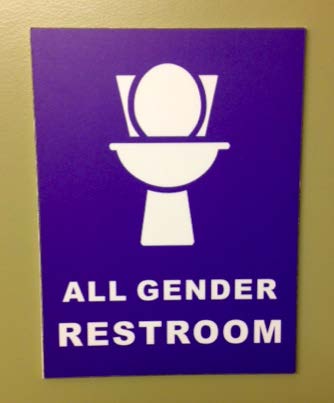Both locations have a floor for male residents and a floor for female residents. Youth identify their gender during the application process and this determines which floor they are put on.

This is a recent switch for Covenant House Vancouver, which had co-ed floors until October 2014. There were fears that a male-only floor would result in increased aggression and as a result staff received training on de-escalation and dealing with physical confrontations. This fear did not materialize.
At CHT, the youth share bathrooms. Bathrooms and shower facilities are gendered – that is, the female-only floor has female-only bathrooms. Within the shared bathroom, the shower stalls are individual. If requested, youth can access private showers in other parts of the program/agency.
Since CHV youth have their own private bathroom in their individual room the overall issue of bathroom privacy is addressed. However, the agency has shared gender-neutral restroom facilities on all floors with appropriate signage.
Both agencies have made a concentrated effort to develop programs and policies that support LGBTQ2S youth. Given that 25-40% of homeless youth identify as LGBTQ2S this is an important consideration for all youth-serving agencies. CHT has a standing LGBTQ2S cross-agency committee that reviews policy, practice, gaps in service and supports. There is also an LGBTQ2S youth group that meets every two weeks. All staff are trained by Rainbow Health Ontario to ensure awareness and sensitivity to the LGBTQ2S community of youth. CHV has mandatory LGBTQ2S training provided by a local agency (PRISM) on a regular basis for all program staff, they have members of the LGBTQ2S community working in all departments and have established community relationships for referrals.
Both agencies have policies around discrimination and harassment. The CHT Rights of Passage manual states “ROP is a welcoming community for people of all sexual orientations, gender identity, and racial diversity. Any homophobic, racist, or derogatory comments and/or actions intended to hurt another program participant will not be tolerated.”
They are both part of a Covenant House International initiative that has joined with the True Colors Fund, an organization founded by Cyndi Lauper. While it is still rolling out, they are working on cultural/inclusion assessments with a goal to strengthen their organizational culture around openness and inclusion.
Homeless Hub Thoughts:
The issue of co-ed or sole gender floors is going to be one for an agency to consider based on space, layout, numbers of youth applying etc. There are definitely arguments that can be made for each viewpoint (segregated female floors may make young women who have experienced sexual assault or violence feel safer; co-ed floors allow for youth to develop inter-personal skills with a wider variety of people).
Allowing youth to self-determine/select their gender (and therefore their floor) is a good start towards trans-inclusivity. To a certain extent, it allows youth who are transgender or genderqueer (or otherwise “gender non-conforming”) to be housed with a reduced fear of discrimination. However, the limit of “male-only” or “female-only” floors means youth who do not identify with a binary gender are limited and must choose the one they feel “closest to”. Co-ed space, in that sense, is more trans-inclusive as youth are not required to select one over the other.
For an agency to truly make itself an LGBTQ2S positive space there are other factors that come into play. This includes:
- Providing ongoing and mandatory information and training for all staff (no matter what their role).
- Providing information and holding awareness workshops for youth.
- Developing and enforcing a strong policy against harassment and discrimination.
- Providing gender-neutral washrooms, including shower facilities (especially if youth do not have their own private bathroom).
- Building networks and partnerships with LGBTQ2S agencies in order to refer youth, find counsellors/mentors etc.
- Ensuring that non-LGBTQ2S agencies to which youth are referred have training, policies and programs in place to support LGBTQ2S youth or providing them with support needed to create a positive space.
- Allowing youth to attend LGBTQ2S events and support groups (i.e. through curfew extensions) under the same criteria that would apply to any other external support.
- Developing inclusive forms (i.e. additional options to male/female for gender).
- Hiring people from the LGBTQ2S community to work in the organization in a variety of roles and positions.
- Soliciting volunteers and mentors from the LGBTQ2S community.
- Ensuring that all policies are reviewed through an LGBTQ2S lens.
